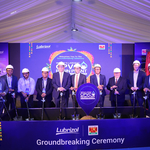DUBLIN--(BUSINESS WIRE)--The "China Automotive Ultrasonic Radar and OEM Parking Roadmap Research Report, 2021" report has been added to ResearchAndMarkets.com's offering.
China Automotive Ultrasonic Radar & OEM Parking Roadmap Research Report, 2021 combs through automotive ultrasonic radar market characteristics, suppliers, development trends and OEM's automatic parking roadmaps.
At present, the market presents the following features:
- Proportion of 12 ultrasonic radar solution continues to increase;
- Home-zone parking pilot (HPP) and automated valet parking (AVP) put forward higher requirements for sensor fusion;
- Cockpit applications such as life detection and gesture control are expected to become new growth points of ultrasonic radar.
Installation of China's automotive ultrasonic radars will hit 150 million units by 2025
Installation of China's automotive ultrasonic radars attained 86.20 mln units (factory-installed market), up 5.2% yr-on-yr. The ultrasonic radars are mainly applied to reversing assist and parking assist. With the upgrading of parking functions and the improvement of installation rate, demand for ultrasonic radars is steadily increasing, further to nearly 150 million units by 2025.
Proportion of 12 ultrasonic radar solution continues to increase
Viewed from ultrasonic radar configuration solution for single vehicle, 4 ultrasonic radar solution occupied most of the market share from 2019 to 2020, applied for realizing reversing assist. With the commercial promotion of automatic parking, the proportion of 12 ultrasonic radar solution is rapidly rising and is expected to become the mainstream of smart cars in the future.
At present, APA solution launched by OEMs basically adopts 12 ultrasonic radars. Among them, BMW and Buick mainly adopt full ultrasonic radar solution. Partial OEMs (such as NIO, Xpeng, Changan and Geely) adopt the vision fusion solution of ultrasonic radar plus surround view camera to improve the success rate of parking in/out of the automatic parking system.
HPP and AVP put forward higher requirements for sensor fusion
Existing L2 and L2 + automatic parking fusion solutions mostly adopt ultrasonic + visual fusion. L3 HPP and L4 AVP will realize the fusion of more sensors, such as the introduction of front-view cameras, radar or LiDAR.
Viewed from HPP, mass production time of HPP is scheduled in 2021 to 2022. Generally, OEMs adopt the solution of adding more sensors (such as front-view camera, millimeter wave angle radar, and high-precision positioning) on the basis of APA sensors, which puts forward higher requirements for sensor fusion.
In April 2021, WM W6 was released to the market. It is equipped with HAVP (Home-AVP) for one-key autonomous driving, obstacle avoidance, intelligent search for parking spaces, and automatic parking in or out without human intervention. WM W6's HAVP supports up to 100m distance and 5 routes learning.
WM W6's HAVP integrates autonomous driving computing platform (Apollo ACU Wuren), with sensors integrating ultrasonic radars, surround view cameras, front-view angle radars and angle radars. Sensor configurations include 5 77GHz radars, 4 surround view cameras, 2 front-view cameras and 12 ultrasonic radars.
In June 2021, Xpeng Motor added HPP function in the OTA upgrade of Xpeng P7 (Xmart OS 2.6.0). The HPP does not rely on the renovation of parking lot end, with up to 1,000m of route learning, supporting up to 100 routes learning in the parking lots (learning one route for each parking lot).
Xpeng P7's HPP integrates ultrasonic radars + surround view cameras + front-view camera + angle radars. Sensor configuration includes 12 ultrasonic radars, 4 surround view cameras, 1 front-view camera, 4 angle radars and centimeter-level high-precision positioning. Of which, its angle radars adopt SRR520 point cloud radars provided by Continental.
As of AVP, many OEMs actively deploy AVP at present. But most of AVP projects are under demo stage
Great Wall WEY Mocha, scheduled to be delivered in Nov.2021, adopt AVP solution of car-end intelligence. Its sensors integrate ultrasonic sensors, surround view cameras, front-view cameras and HD map. The AVP solution is mainly applied for parking scenarios in areas such as supermarkets.
ARCFOX ?S S Hi version, with mass production scheduled for the end of 2021, adopts AVP solution of car end intelligence. Its sensor configuration includes LiDAR, radar, ultrasonic radar, ADS camera and surround view camera.
Cockpit applications like life detection and gesture control are expected to be new drivers for the growth of ultrasonic radar
As intelligent cockpits advance, ultrasonic radar may become applicable to new functions such as life detection and gesture control. One example is Audiowell Rear Occupant Alert (ROA), a system that detects moving objects via ultrasonic radar. When confirming a moving object at the rear row, it sends a warning to the owner; when the rear occupants fall sleep, it detects slight movements caused by breathing through the Doppler Effect of ultrasonic waves.
With ultrasonic signals as the carrier, Maxus Tech enables gesture control, a function applicable to scenarios such as smart home, smart wearable device and intelligent cockpit.
Companies Mentioned
- Great Wall Motor
- NIO
- LiXiang
- BAIC
- BYD
- Weltmeister
- BMW
- Daimler
- Ford
- GM
- Honda
- Bosch
- Valeo
- Continental
- Nicera
- Murata
- Denso
- Hyundai Mobis
- Audiowell
- TungThih Electronic
- Sunrich-Teck
- Weihai Sensortec
- Whetron Electronics
- Hangsheng Electronics
- Shenzhen Shunhe Electric Technology
- LongHorn
- Hefei Softec Auto Electronic
For more information about this report visit https://www.researchandmarkets.com/r/4sbn0c
Contacts
ResearchAndMarkets.com
Laura Wood, Senior Press Manager
[email protected]
For E.S.T Office Hours Call 1-917-300-0470
For U.S./CAN Toll Free Call 1-800-526-8630
For GMT Office Hours Call +353-1-416-8900












